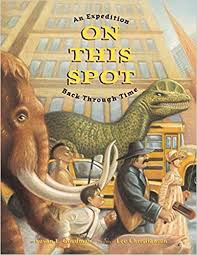On This Spot
Listen to the Recess! Clip
| Author | John Cech |
| Air Date | 10/11/2004 |

On This Spot Transcript
As a graduate student, I studied with the poet, Charles Olson, who, among many other things — like coining the word, post-modern — held steadfastly to the idea that a poet had to locate him or herself in a particular place. For Olson, that spot on the map was the fishing town of Gloucester, Massachusetts, where he had summered as a boy, and where he took up residence as the presiding creative spirit of the town as a man. He so jealously guarded his unique, self-proclaimed role as the town’s poet, its Homer, that whenever a fellow poet visited him there, he’d give him shelter for a day or two, buy him chowder, and then a bus ticket out of town. A town, he once famously proclaimed, could only house one poet. More importantly, though, Olson believed that one of the basic tasks of the poet was to find out everything he could about the spot where he lived. Those details — history, legend, the conversations up and down the street, economics, geology, politics, flora and fauna — were the stuff to make poems from. And if you chose the right place, as he felt he had done in Gloucester, the whole world opened up from that spot — it could take you from Cape Anne back to ancient Phonecia, or down into the earth to read the story of the movement of tectonic plates of that first primordial continent, Godwanna Land. A place gave you both a real and a mythological address, and it lead Olson to call himself an “archaeologist of morning.”
This is an important idea for children to be introduced to early. That is, digging in. Finding out everything you can about where you live. Burrowing down deep into its history. That’s the premise of the journey for the young reader that Susan Goodman maps out, with the help of Lee Christiansen’s illustrations, in On This Spot, An Expedition Back Through Time. Here, the place is New York City, and by the end of this poetically evocative and scientifically sophisticated picture book, we have moved through eons — from the early Dutch and Portuguese colonists and traders of 350 years ago, to the native Americans — the Lenapes — who lived on the island for centuries before the Europeans, to the glaciers that once covered Manhattan, to the ammosaurs that used to eat its ginkgo leaves, and finally to the rock, “like the surface of our moon,” Goodman writes, with “a dusting of algae,” that evokes a beginning of things. This book offers children and the adults reading along with them something essential and urgent: perspective. There’s an exciting seed here for how we can teach our children about their place on the planet. Like Olson, Goodman invites us to look back in time with her in order to fully fathom our present and the poems that might be our future.